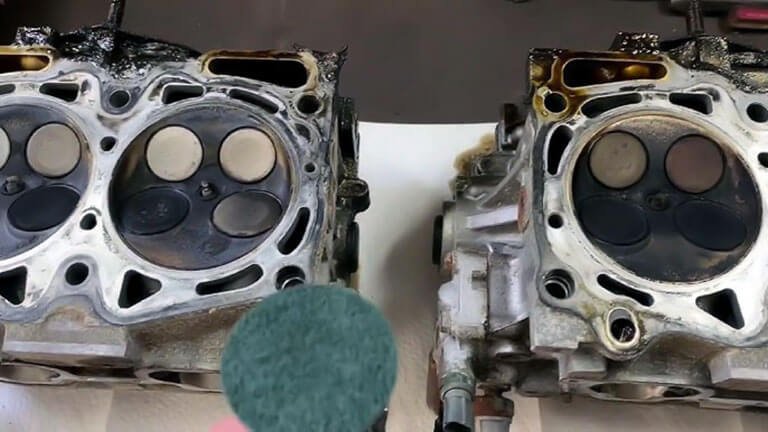Subaru Head Gasket Problems: Prevent & Repair Tips
Subaru vehicles are prone to head gasket problems, particularly in older models. Symptoms include overheating, coolant leaks, and white exhaust smoke.
Subaru has built a reputation for reliability and performance, but head gasket issues often plague various models. These problems typically arise in older vehicles or those with high mileage. The unique boxer engine design, while efficient, can contribute to gasket wear.
Owners may notice signs like engine overheating or coolant loss, which signal potential gasket failure. Timely diagnosis is crucial to prevent further damage. Understanding these issues helps Subaru owners maintain their vehicles effectively. Regular maintenance and monitoring can extend the life of the engine and minimize repair costs. Addressing problems early ensures a smooth driving experience and enhances vehicle longevity.
Introduction To Subaru Head Gasket Issues

Subaru vehicles are known for their reliability and performance. However, many owners face a common problem: head gasket failure. This issue can lead to serious engine damage and costly repairs. Understanding this problem is essential for Subaru owners. Knowing the symptoms and reasons for failure can help in early detection.
Common Symptoms
Identifying head gasket problems early is crucial. Here are some common symptoms:
- Overheating: Engine temperature rises unexpectedly.
- Coolant leaks: Puddles of coolant under the vehicle.
- White smoke: White smoke from the exhaust pipe.
- Milky oil: Oil appears creamy or frothy.
- Loss of power: Reduced engine performance and power.
Why They Fail
Head gaskets can fail for several reasons. Understanding these can help prevent future issues:
| Reason | Description |
|---|---|
| Overheating | Excessive heat can warp the gasket. |
| Age | Older vehicles are more prone to wear. |
| Poor maintenance | Neglecting oil changes can cause damage. |
| Manufacturing defects | Some models may have faulty gaskets. |
Regular maintenance can help extend the life of the head gasket. Be aware of any symptoms and address them quickly.
The Technical Side Of Head Gasket Failure
Understanding the technical aspects of head gasket failure is crucial for Subaru owners. This issue often leads to serious engine problems. Let’s explore the factors that contribute to head gasket failure.
Material And Design
The materials used in head gaskets play a vital role in their durability. Subaru uses different types of materials, including:
- Composite Gaskets: Made from layers of materials.
- MLS (Multi-Layer Steel) Gaskets: Offer better sealing.
- Graphite Gaskets: Provide good thermal resistance.
Design flaws can weaken gaskets. Common issues include:
- Poor sealing surfaces.
- Inadequate compression specifications.
- Incompatible materials with engine fluids.
Proper design can help prevent leaks and failures. Regular checks can also increase lifespan.
Engine Heat And Pressure Effects
High engine temperatures can cause head gaskets to fail. Heat affects the materials, leading to:
- Warping of the cylinder head.
- Loss of sealing efficiency.
- Increased pressure on the gasket.
Pressure from combustion can stress the gasket. This often results in:
| Effect | Outcome |
|---|---|
| Increased Temperature | Gasket Degradation |
| High Cylinder Pressure | Blown Gasket |
Understanding these effects helps in identifying potential issues early. Regular maintenance can prevent costly repairs.
Identifying Subaru Head Gasket Problems
Subaru head gasket problems can lead to serious engine damage. Early detection is crucial. Look for specific signs and use proper tools for diagnosis.
Leak Detection Methods
Detecting leaks is the first step in identifying head gasket issues. Use the following methods:
- Visual Inspection: Check for coolant leaks under the car.
- Coolant Color: Look for milky brown coolant. This indicates oil contamination.
- Smoke from Exhaust: White smoke may indicate coolant burning in the engine.
- Bubbles in Radiator: Bubbles may show combustion gases in the coolant.
Diagnostic Tools
Using the right tools simplifies the diagnosis process. Consider these:
| Tool | Purpose |
|---|---|
| Compression Tester | Measures engine cylinder pressure. |
| Leak Down Tester | Checks for leaks in cylinders. |
| Head Gasket Test Kit | Detects combustion gases in coolant. |
| OBD-II Scanner | Reads engine trouble codes. |
Identifying Subaru head gasket problems requires vigilance. Regular checks can save money and time. Keep an eye on symptoms and use effective diagnostic tools.
Preventive Measures For Head Gasket Longevity
Maintaining the head gasket in your Subaru is crucial. Preventive measures can help avoid costly repairs. Regular checks and upkeep protect this vital component.
Regular Maintenance Tips
- Check oil levels monthly.
- Change oil every 3,000 to 5,000 miles.
- Inspect the head gasket for leaks.
- Monitor engine temperature regularly.
- Use high-quality oil and filters.
Following these simple tips keeps your engine healthy. Regular maintenance helps identify issues early. Catching problems early saves money.
Coolant System Care
A well-maintained coolant system is vital. Coolant prevents overheating and protects the head gasket. Follow these steps for effective coolant care:
- Check coolant levels every month.
- Flush the coolant system every two years.
- Use the correct coolant type for your Subaru.
- Inspect hoses for leaks and wear.
- Replace worn or damaged parts promptly.
Proper coolant management prevents overheating. This reduces the risk of head gasket failure.
| Coolant Maintenance Task | Frequency |
|---|---|
| Check coolant levels | Monthly |
| Flush coolant system | Every 2 years |
| Inspect hoses | Every 6 months |
Choosing The Right Repair Approach
Subaru head gasket problems can be frustrating. Choosing the right repair method is crucial. You can either tackle it yourself or seek professional help. Each option has pros and cons. Let’s explore both paths.
Diy Vs Professional Repair
Deciding between DIY and professional repair requires careful thought.
- DIY Repair:
- Cost-effective solution.
- Gives a sense of achievement.
- Requires mechanical skills.
- May take longer.
- Professional Repair:
- Quicker turnaround time.
- Expertise ensures quality work.
- Warranties on repairs.
- More expensive.
Assess your skills and comfort level. DIY can save money but may need tools and time. Professional help guarantees quality but at a cost.
Selecting Quality Replacement Parts
Choosing the right parts is essential for a lasting repair. Quality replacement parts enhance durability and performance. Consider these factors:
| Part Type | Quality Indicators |
|---|---|
| Head Gasket | OEM or high-grade aftermarket options |
| Bolts | Use torque-to-yield (TTY) bolts for best results |
| Sealants | High-temperature resistant sealants recommended |
Research brands and read reviews. Investing in quality parts saves money in the long run. Avoid cheap alternatives that may fail quickly.
Step-by-step Guide To Subaru Head Gasket Repair
Repairing a Subaru head gasket is crucial for engine health. This guide outlines the necessary steps for a successful repair. Follow each step closely to ensure quality results.
Disassembly Process
Start by gathering your tools. You will need:
- Socket set
- Torque wrench
- Ratchet
- Gasket scraper
- Clean rags
Follow these steps:
- Disconnect the battery.
- Drain the coolant and oil.
- Remove the intake manifold.
- Take off the exhaust manifold.
- Unbolt the cylinder head.
Be careful with all components. Label parts to simplify reassembly.
Cleaning And Inspection
Cleaning is key to a proper seal. Follow these steps:
- Use a gasket scraper to remove old gasket material.
- Clean the cylinder head and engine block surfaces.
- Inspect for cracks or damage.
Use a flat surface to check the cylinder head. A straight edge can help you find warping. If it’s warped, replace it.
Reassembly Tips
Reassembly requires patience and precision. Here are some tips:
- Use a new head gasket.
- Follow the manufacturer’s torque specifications.
- Reattach the intake and exhaust manifolds securely.
Double-check all connections. Ensure the battery is reconnected. Fill with fresh coolant and oil. Start the engine and check for leaks.
Cost Considerations For Repair And Maintenance
Subaru head gasket problems can lead to significant repair costs. Understanding these costs helps in planning your budget. Proper maintenance can reduce the chance of issues and save money.
Estimating Repair Costs
Repair costs for a Subaru head gasket can vary widely. Here are some factors that influence costs:
- Model and year of the Subaru
- Labor rates in your area
- Parts availability
- Extent of engine damage
Here’s a rough estimate of repair costs:
| Model | Estimated Cost |
|---|---|
| Subaru Outback | $1,500 – $2,500 |
| Subaru Forester | $1,500 – $2,800 |
| Subaru Legacy | $1,600 – $3,000 |
Costs can rise if further damage exists. Always get multiple quotes from mechanics.
Budgeting For Future Maintenance
Preparing for future maintenance is crucial. Regular check-ups can catch issues early. Here’s how to budget:
- Set aside funds monthly for repairs.
- Track maintenance history.
- Consider extended warranties.
- Research common issues for your model.
Regular maintenance can prevent costly repairs. Simple tasks like oil changes help keep the engine running smoothly.
Investing in quality parts saves money long-term. Always use recommended parts for your Subaru. This ensures reliability and performance.
Extending The Life Of Your Subaru
Subaru vehicles are known for their durability. A key issue is the head gasket problem. Addressing this issue early can help extend the life of your Subaru.
Long-term Maintenance Strategy
Maintaining your Subaru involves a few essential steps. These steps can prevent head gasket failures:
- Regular Oil Changes: Change oil every 3,000 to 5,000 miles.
- Coolant Checks: Monitor coolant levels regularly. Low coolant can cause overheating.
- Inspect Belts and Hoses: Look for signs of wear and tear. Replace them as needed.
- Scheduled Inspections: Follow the maintenance schedule in your manual.
These strategies can help prevent major repairs. Keeping your Subaru in good shape is vital.
When To Consider Engine Replacement
Sometimes, repairs are not enough. Here are signs that engine replacement may be necessary:
- Severe Overheating: This can lead to serious damage.
- Excessive Oil Consumption: Frequent top-ups indicate deeper issues.
- Significant Coolant Leaks: Persistent leaks may signal major problems.
- Loss of Power: Noticeable drops in performance can indicate engine failure.
Consider the age and mileage of your Subaru. Weigh the costs of repairs against a new engine. Sometimes, replacement is the best option.
Frequently Asked Questions
What Are Signs Of Subaru Head Gasket Failure?
Common signs include overheating, coolant leaks, and white smoke from the exhaust.
How Much Does A Subaru Head Gasket Repair Cost?
Repair costs typically range from $1,000 to $2,500, depending on the model and labor rates.
What Causes Head Gasket Problems In Subarus?
Overheating, poor maintenance, and engine design flaws often lead to head gasket issues.
Can I Drive My Subaru With A Blown Head Gasket?
Driving with a blown head gasket can cause severe engine damage, so it’s best to avoid it.
How To Prevent Subaru Head Gasket Issues?
Regular maintenance, timely oil changes, and monitoring coolant levels can help prevent these problems. “`
Conclusion
Subaru head gasket problems can lead to serious engine issues if not addressed promptly. Regular maintenance and early detection are key. If you notice symptoms like overheating or fluid leaks, seek professional help immediately. Being proactive can save you time and money, ensuring your Subaru remains reliable for years to come.






